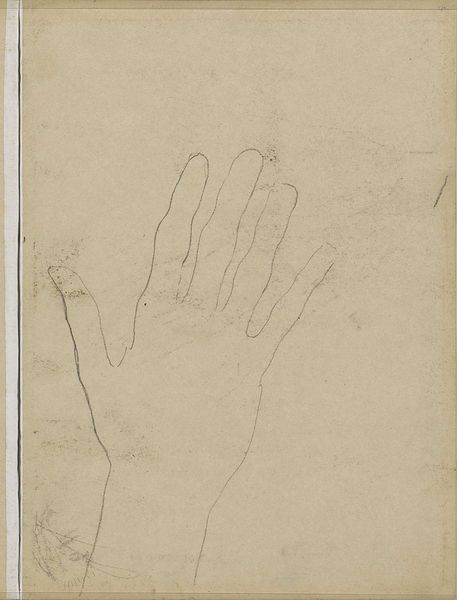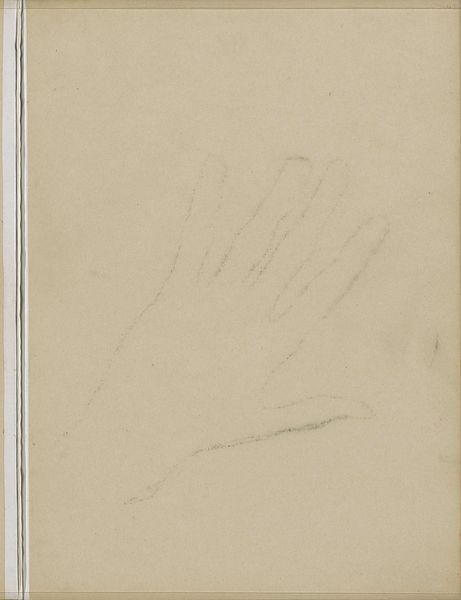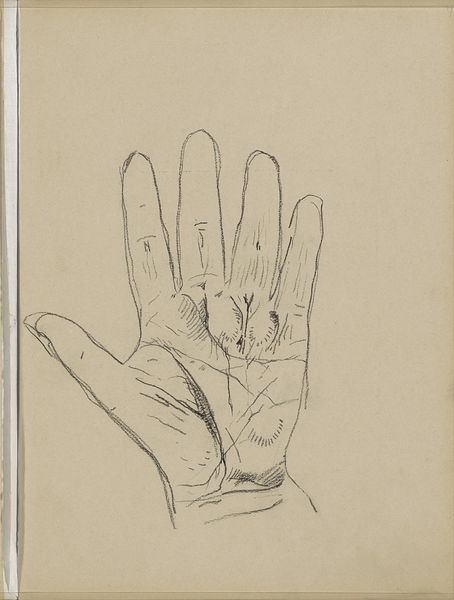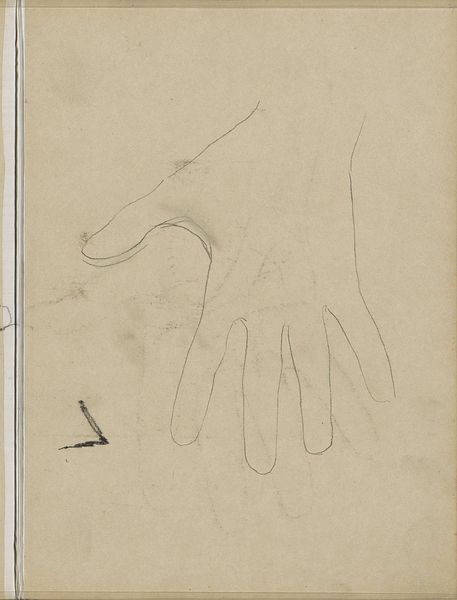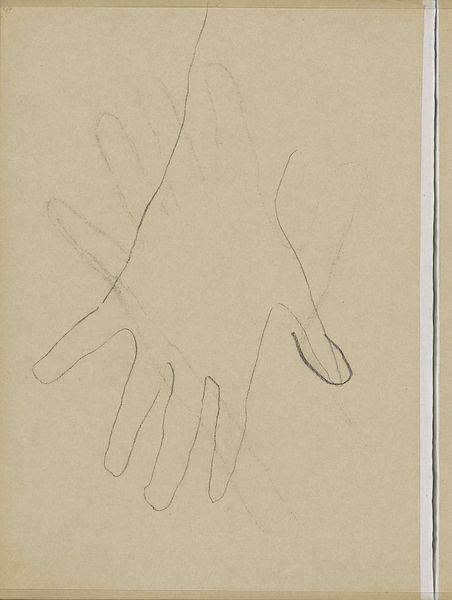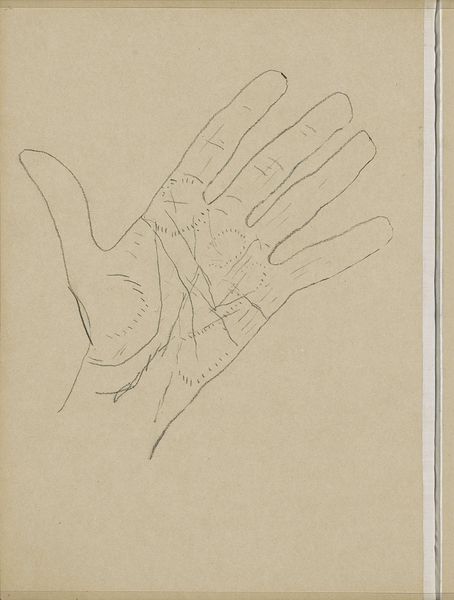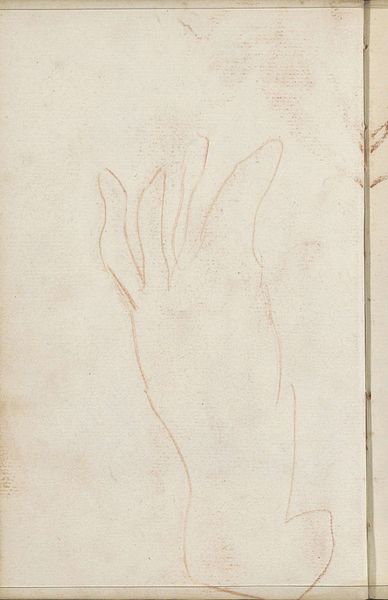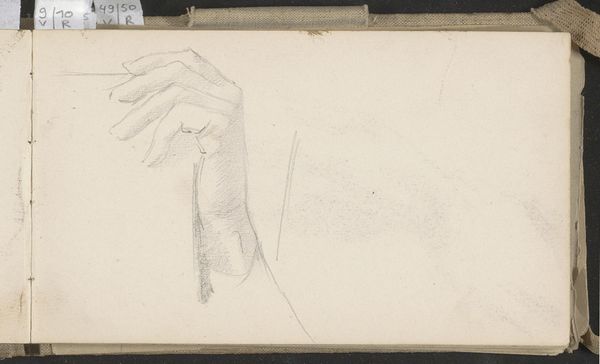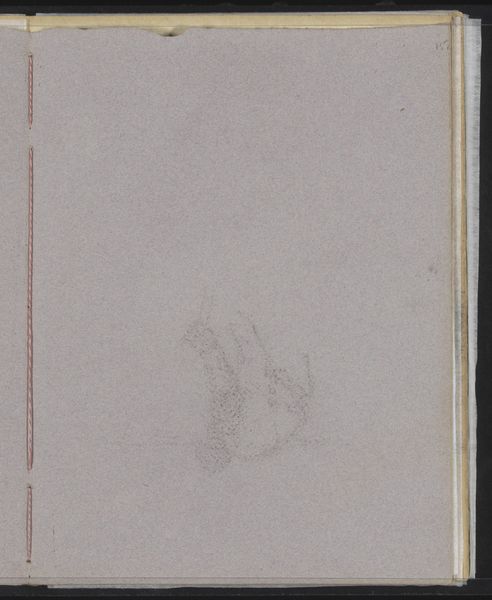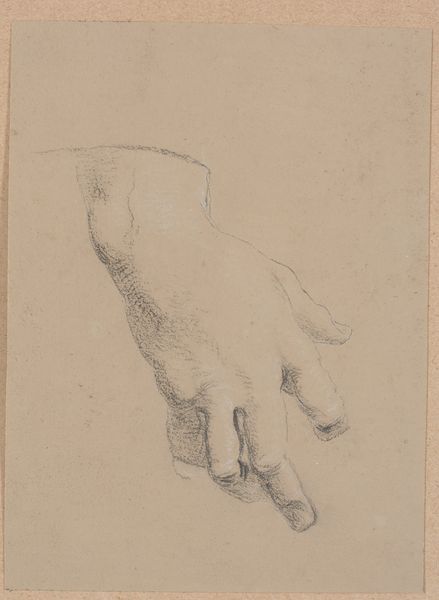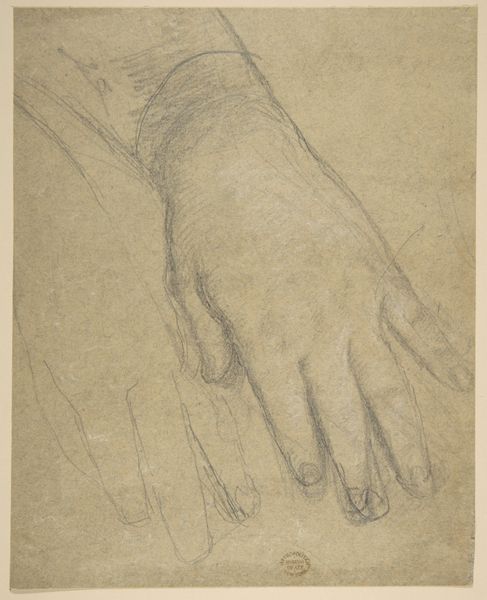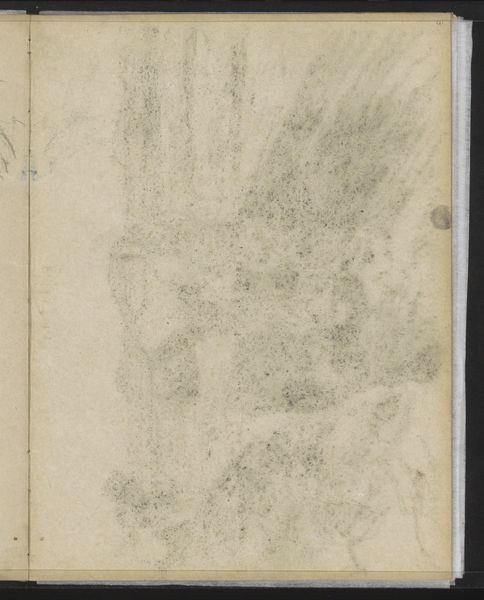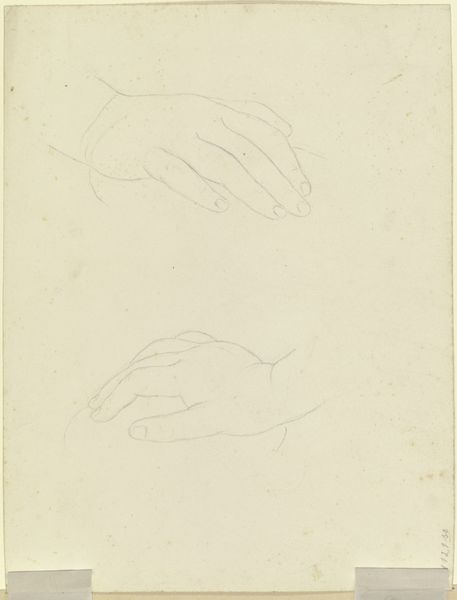
drawing, pencil
#
portrait
#
drawing
#
aged paper
#
toned paper
#
light pencil work
#
homemade paper
#
ink paper printed
#
sketch book
#
hand drawn type
#
figuration
#
personal sketchbook
#
pencil
#
sketchbook drawing
#
sketchbook art
#
realism
Copyright: Rijks Museum: Open Domain
Editor: Here we have "Abklatsch van de krijttekening op pagina 17," a pencil drawing by Willem Witsen, created sometime between 1874 and 1923. It’s a faint, almost ghost-like image of a hand. What can you tell us about this work, looking at it from an intersectional and social point of view? Curator: Well, it’s easy to initially dismiss this as a simple hand study. But I think there’s something powerful in its mundanity. A hand can represent labor, power, and identity. In this time period, consider who had the power to create, to leave their mark, versus whose hands were relegated to labor, often unseen and uncelebrated. Editor: That’s a great point. It’s easy to get caught up in the aesthetic and forget the social context. It’s just… a hand. Curator: Exactly! But *whose* hand? In whose service? This drawing prompts us to consider Witsen’s position within the art world, his social standing. Was he aware of, and perhaps even commenting on, the labor that underpinned the bourgeois lifestyle that allowed him the leisure to sketch? Or was this simply an unconscious echo of the era's power structures? What do you think? Editor: I see what you’re getting at. It forces you to think about whose experiences are valued and whose are overlooked. Looking at the piece now, it's almost a question being posed: Who is holding this pencil, and what are they choosing to depict? Curator: Precisely! And in choosing to preserve even this simple sketch, what are institutions like the Rijksmuseum implicitly saying about the value of that perspective? It asks us to think about our own role as viewers, too, in perpetuating or challenging those structures. Editor: That’s a completely different way of viewing a seemingly simple drawing. I definitely learned something new. Curator: Me too. Thinking about the historical and social context helps unpack so much complexity that's hidden beneath the surface.
Comments
No comments
Be the first to comment and join the conversation on the ultimate creative platform.
